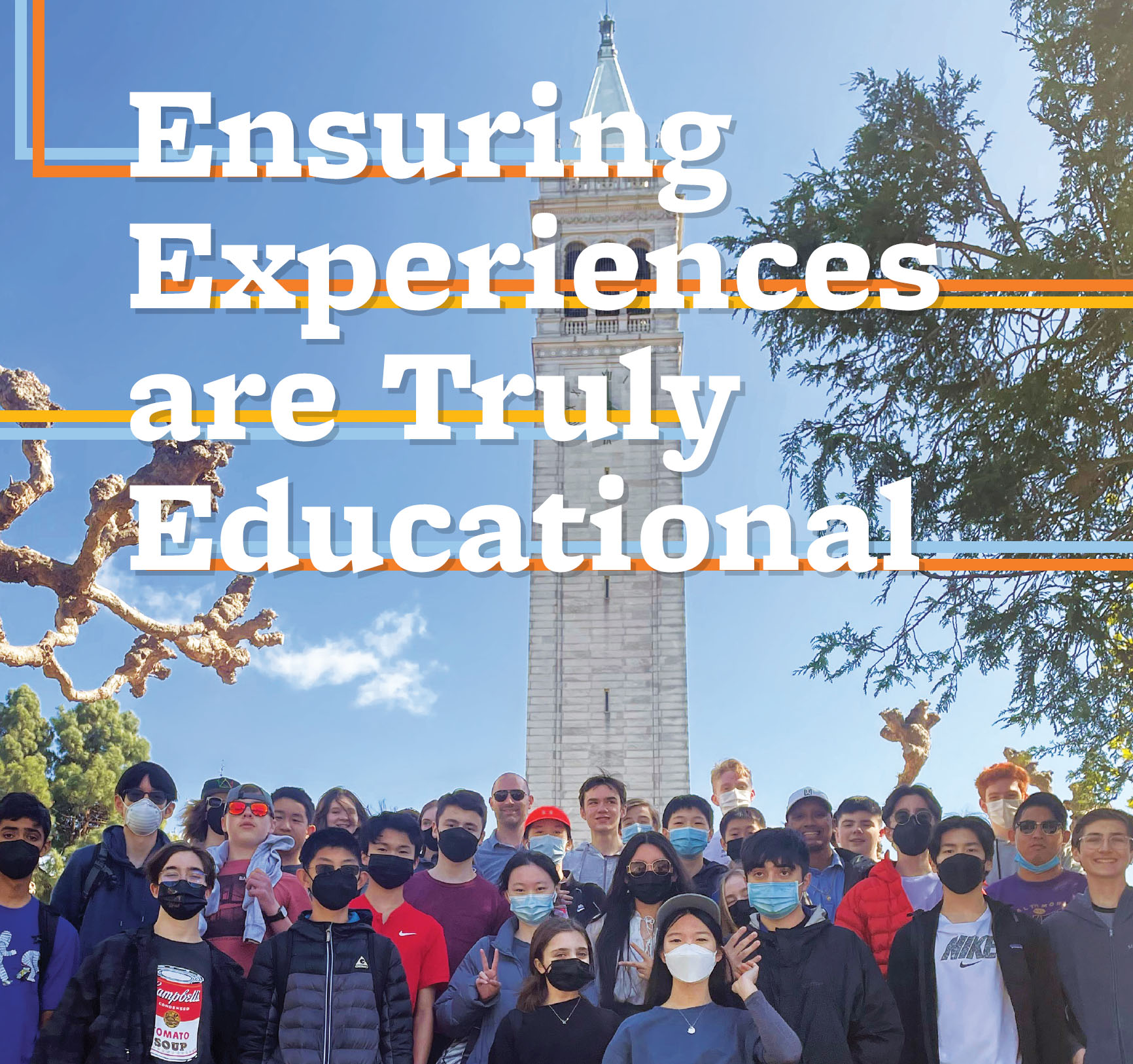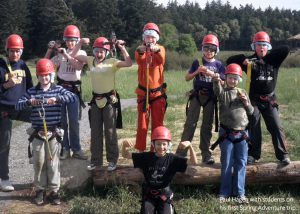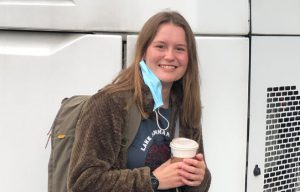
By Paul Hagen, Director of Well-Being
 The phrase “Experiential Education” has joined a long list of cliché terms that are used indiscriminately at teacher conferences, in educational publications, and amongst educators eager to adopt the parlance of the moment. But what does it really mean? How does it influence our students’ learning? Does it add value to an Eastside Prep education or is it just another educational marketing gimmick?
The phrase “Experiential Education” has joined a long list of cliché terms that are used indiscriminately at teacher conferences, in educational publications, and amongst educators eager to adopt the parlance of the moment. But what does it really mean? How does it influence our students’ learning? Does it add value to an Eastside Prep education or is it just another educational marketing gimmick?
To answer these questions, we reflect on the foundations of experiential education at Eastside Preparatory School. Where did this program—which includes Fall Orientations, Outdoor Adventures, and Education Beyond the Classroom (EBC) Week—come from? What was its purpose in its earliest days? And, how has it evolved over the last twenty years?
First, a memory. The ferry’s horn gave one long, deep blast followed by two short blasts in quick succession as it cut through the morning’s lifting fog. Gliding north through the Rosario Strait on still waters, the only ripples were those widening in our wake. Students danced on the forward deck, the breeze catching their laughter and carrying it to the barren shores of the islands and atolls we passed. Others sat in booths drinking hot chocolate and playing cards as they excitedly talked about the trip ahead. It was Spring Adventures (the precursor to EBC Week) 2010—my first at EPS—and our group of two teachers and the fifth grade, only eleven students at that time, were traveling to Camp Orkila for a week of experiential education. I was younger then—still in my twenties with a full head of hair to prove it—and I was just as excited as the students were. I was also curious what the week ahead would hold for our little group. Camp Orkila, on the northwest shore of Orcas Island, is the quintessential camp experience, with rustic cabins and plywood bunkbeds, wooded trails, traditional camp food in the cavernous mess hall, a giant rope swing, an archery range, canoes, field games, and a central firepit for roasting marshmallows and singing camp songs. Over the week, students climbed Mount Constitution, explored the shoreline, challenged themselves on the ropes course, and studied tidepools. There were challenges. It rained…a lot. There was a small kerfuffle between two tired students who, provoked by exhaustion and homesickness, were unkind to one another. And there was a raccoon—searching for a hidden peanut butter sandwich—that found its way to the bottom of a surprised student’s sleeping bag. There were blisters, nerves, and seasonal allergies. But it was a wonderful week. Students laughed and learned together. We all got to know each other better. And we all grew a little as a result of our shared experience at camp.
That first trip was a success by almost any measure—students connected with each other, learned together, were challenged in a safe environment, and had lots of fun—but the success was in many ways just a happy accident—a fortuitous byproduct of the experience rather than a carefully orchestrated outcome.
When EPS was in its infancy, all agreed that experiential education was necessary to fully achieve the school’s mission and vision. What better way to inspire students to create a better world than to get them out into that world? What better way to teach critical thought, responsible action, compassionate leadership, and wise innovation than to provide authentic opportunities in the “real world,” outside of the classroom, to practice these values? But in those early days, the experience often came at the expense of the education. We knew instinctually that getting students out of their classrooms and into the wider world was an important educational opportunity that should not be missed; we believed in the merit of experiential education, but the learning was largely left to chance.
Over the last several years, we have better defined, clarified, and articulated our experiential education program at EPS. First, we developed seven themes that provide structure for the trips and experiences we now offer. Today each experience is closely tied to one or more of the themes of service, tech/science, Spanish language, the arts, history and culture, outdoor/nature, and college tours. With trips and experiences tightly moored to one or more of these themes, we are able to build experiences that are carefully focused, easily integrated with academic courses, and deeply educational. Additionally, the experiential education program is now guided by seven goals—safety and well-being, learning and discovery, individual growth, group dynamics, human value, human expression, and fun and adventure—which allow us to measure success, assess progress, and pursue programmatic excellence. Clarity of purpose and process ensures that experiential education at EPS is a rich program that provides meaningful and memorable experiences that are both universally popular and intensely educational.
 This last year, for my thirteenth time at Eastside Prep, I led an EBC Week experience in the spring. Instead of an early morning ferry ride, our group of thirty-one students and four chaperones met at the departure desk at SeaTac for an early morning flight to San Jose. The themes of the experience were technology, science, and nature, and we were all eager to experience the important learning that lay in the week ahead. During an intense and intentional week of experiential education, we engaged in the kind of learning that epitomizes EBC Week. We met with park rangers at the Point Lobos Natural Reserve, where we examined wildflowers, documented dramatic geology, and marveled at the diversity of coastal ecology; we visited the Lick Observatory—a highlight for many—where world-class experts spent hours showing us their array of unrivaled telescopes; and we took part in hands-on experiences at several premier science museums. The trip was hugely successful because the themes and goals were well-defined, the purpose was clear, and all participants were well-prepared to engage in the topics and the experiences that were designed to enrich and elevate their learning.
This last year, for my thirteenth time at Eastside Prep, I led an EBC Week experience in the spring. Instead of an early morning ferry ride, our group of thirty-one students and four chaperones met at the departure desk at SeaTac for an early morning flight to San Jose. The themes of the experience were technology, science, and nature, and we were all eager to experience the important learning that lay in the week ahead. During an intense and intentional week of experiential education, we engaged in the kind of learning that epitomizes EBC Week. We met with park rangers at the Point Lobos Natural Reserve, where we examined wildflowers, documented dramatic geology, and marveled at the diversity of coastal ecology; we visited the Lick Observatory—a highlight for many—where world-class experts spent hours showing us their array of unrivaled telescopes; and we took part in hands-on experiences at several premier science museums. The trip was hugely successful because the themes and goals were well-defined, the purpose was clear, and all participants were well-prepared to engage in the topics and the experiences that were designed to enrich and elevate their learning.
Ours, however, was not the only successful EBC Week experience. All told, students participated in twenty-two trips and experiences in 2022, all of which adhered to the EPS experiential education goals and themes and all of which were deeply impactful. Students participated in service projects in Puerto Rico and El Paso, explored musical arts in Nashville, studied ecology in Yellowstone National Park, took a deep dive into theatre arts in New York City, blew glass in Seattle, tackled the red canyons in Utah’s canyon country, and studied history and culture on a road trip through the American West. We have always believed that travel is transformative—it changes perspectives, inspires growth, promotes resilience, and builds understanding—and that shared experiences foster lasting connections. But now, instead of leaving learning up to chance, our experiential education program is well-defined, carefully curated, and intentionally educational, ensuring that all students have experiences that truly are Education Beyond the Classroom.
EBC Reflection
By Christy Kearny, EPS Class of 2017
 When I was asked to write a short piece on EBC Week, my first thought was “you mean Spring Adventures?” During my early years at EPS, it seemed like the name changed every year! I adored camp as a kid, and EBC Week—whatever it might be called—gave me a chance to experience that “camp life” with my classmates. Sure, we knew how we solved algebra problems and discussed books together, but now we got to learn the bizarre oatmeal toppings we preferred, and what each other’s pajamas looked like. We learned to view each other (as well as our teachers!) as more than just “people from school.” As we grew older, the experiences we faced together became more challenging, and meaningful. Together we tackled the preterite subjunctive in Spanish class as well as taught frisbee to a group of kids in Guatemala.
When I was asked to write a short piece on EBC Week, my first thought was “you mean Spring Adventures?” During my early years at EPS, it seemed like the name changed every year! I adored camp as a kid, and EBC Week—whatever it might be called—gave me a chance to experience that “camp life” with my classmates. Sure, we knew how we solved algebra problems and discussed books together, but now we got to learn the bizarre oatmeal toppings we preferred, and what each other’s pajamas looked like. We learned to view each other (as well as our teachers!) as more than just “people from school.” As we grew older, the experiences we faced together became more challenging, and meaningful. Together we tackled the preterite subjunctive in Spanish class as well as taught frisbee to a group of kids in Guatemala.
This year, before starting a new job, I had the opportunity to chaperone a group of students on an EBC trip. It was neat to see students supporting and challenging each other as they faced new experiences, just like I remembered. However, this time I also experienced the other side of things—the bonds that form between faculty chaperones as they face the inevitable mishaps that come from running trips with teenagers. It was pretty special being able to talk with Mr. Ho and Ms. Stearns about their career paths and professional advice. It seems that when we make space outside of school to know each other, all those cracks that school misses start to fill in.

